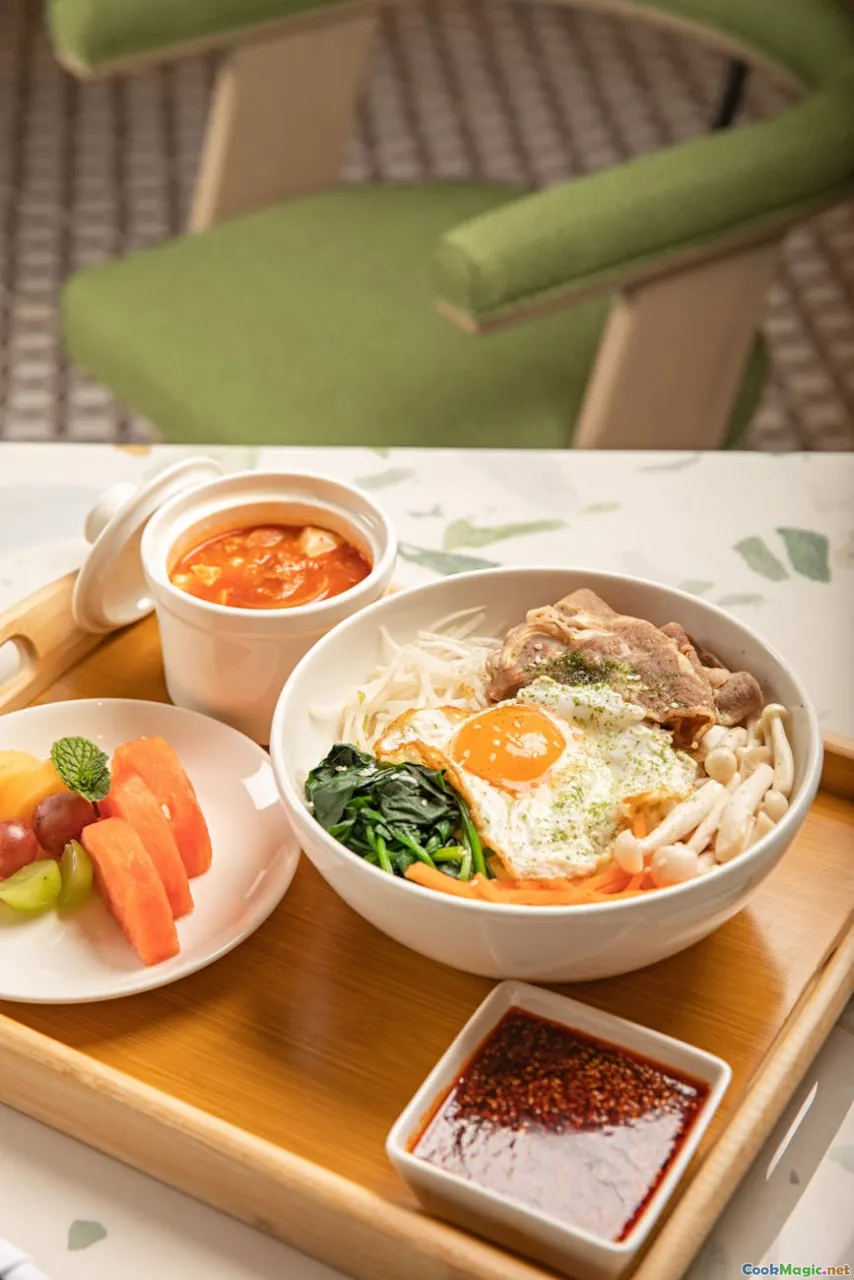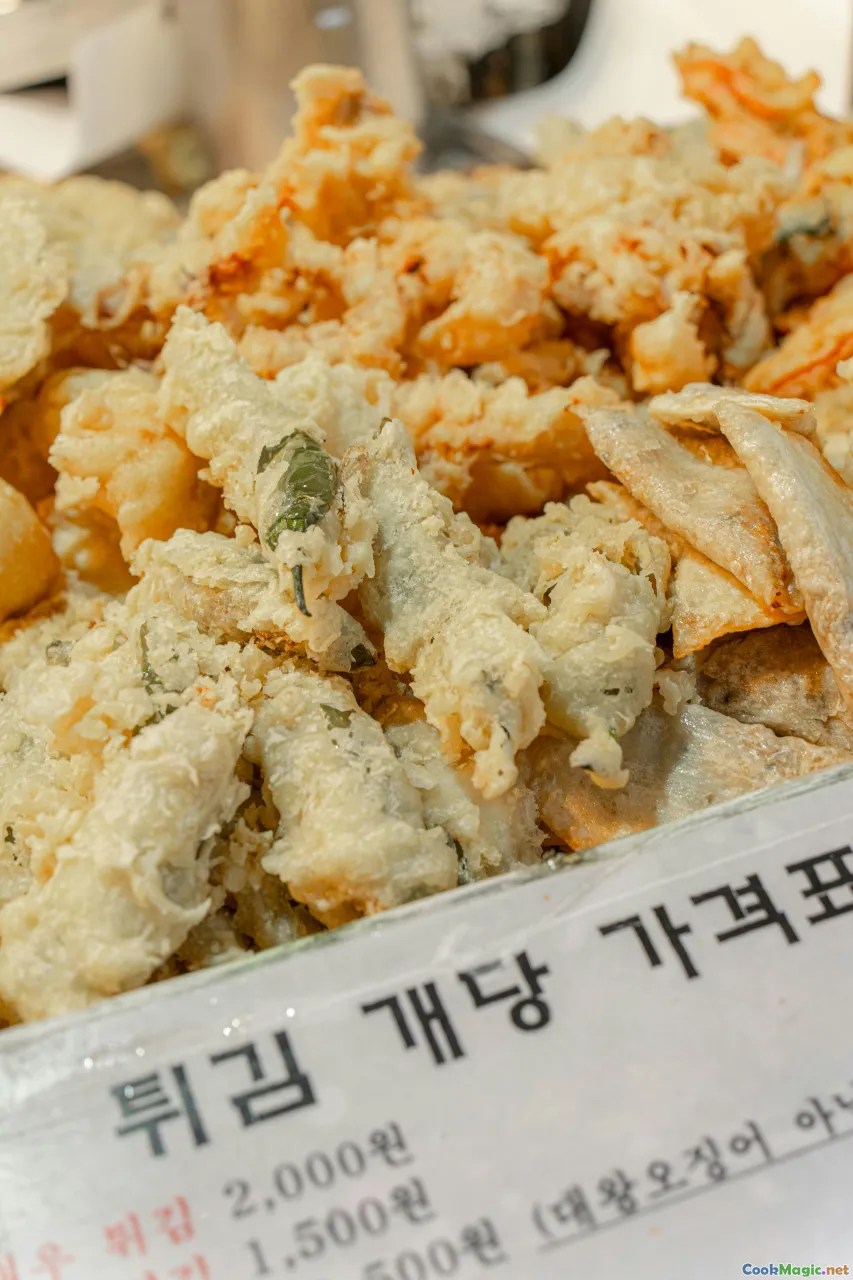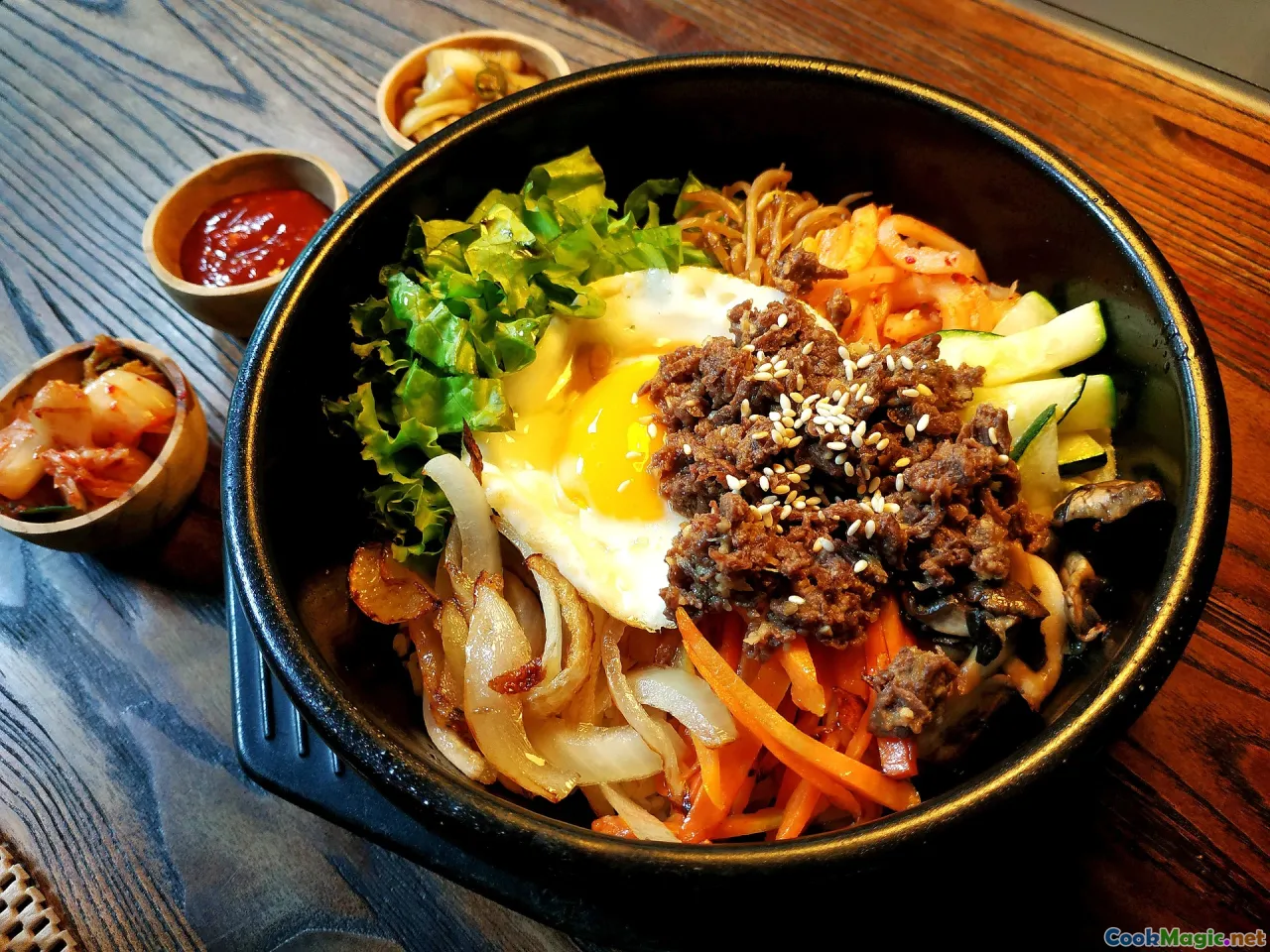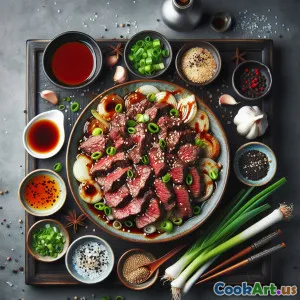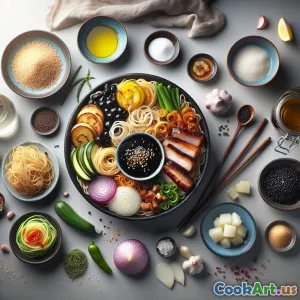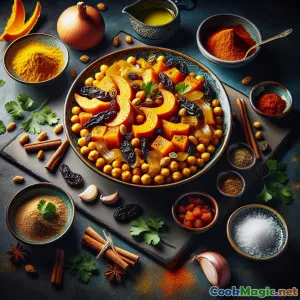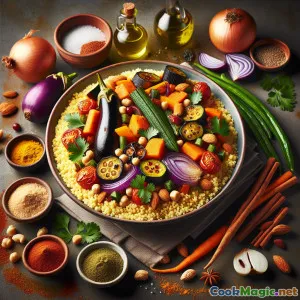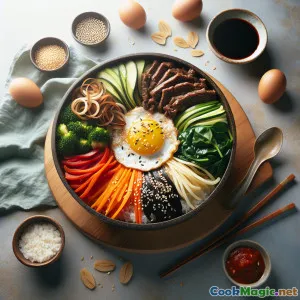
Вкусный Корейский Бибимбап: Красочная Чаша Риса
(Delicious Korean Bibimbap: A Colorful Rice Bowl)
(0 Обзоры)0
493
июнь 29, 2025
Сообщить о проблеме
Ингредиенты
-
2 cups Вареный Рис
(Используйте короткозерный рис для подлинности)
-
150 grams Говядина
(Тонко нарезанный, можно использовать говядину для бульгоги)
-
1 medium Морковь
(Жюльен)
-
1 medium Цукини
(Жюльен)
-
1 cup Шпинат
(Бланшированный)
-
2 large Яйцо
(Яйцо глазунья солнечная сторона вверх)
-
2 tbsp Гочуджан
(Корейская острая паста из красного чили)
-
1 tbsp Кунжутное масло
(Для вкуса)
-
1 tbsp Соевый соус
(Для маринада говядины)
-
1 tbsp Семена кунжута
(Для украшения)
(Используйте короткозерный рис для подлинности)
(Тонко нарезанный, можно использовать говядину для бульгоги)
(Жюльен)
(Жюльен)
(Бланшированный)
(Яйцо глазунья солнечная сторона вверх)
(Корейская острая паста из красного чили)
(Для вкуса)
(Для маринада говядины)
(Для украшения)
Питательная ценность
- Порции: 2
- Размер порции: 1 миска (350г)
- Calories: 700 kcal
- Carbohydrates: 80 g
- Protein: 30 g
- Fat: 25 g
- Fiber: 6 g
- Sugar: 5 g
- Sodium: 600 mg
- Cholesterol: 200 mg
- Calcium: 150 mg
- Iron: 3 mg
Инструкции
-
1 - Подготовьте ингредиенты:
Вымойте и нарежьте морковь и цуккини соломкой. Бланшируйте шпинат в кипящей воде.
-
2 - Готовить говядину:
Маринуйте говядину в соевом соусе и кунжутном масле 10 минут, затем жарьте до готовности.
-
3 - Обжарить овощи:
В сковороде обжарьте морковь и цуккини отдельно до мягкости.
-
4 - Жарить яйца:
В отдельной сковороде обжарьте яичницу глазунью солнечной стороной вверх.
-
5 - Сборка бибимбап:
В каждую миску положите порцию риса, сверху говядину, овощи и жареное яйцо. Полейте гочуджаном и кунжутным маслом.
-
6 - Подача:
Посыпьте кунжутными семенами и подавайте теплым, перемешивая все ингредиенты перед едой.
Вымойте и нарежьте морковь и цуккини соломкой. Бланшируйте шпинат в кипящей воде.
Маринуйте говядину в соевом соусе и кунжутном масле 10 минут, затем жарьте до готовности.
В сковороде обжарьте морковь и цуккини отдельно до мягкости.
В отдельной сковороде обжарьте яичницу глазунью солнечной стороной вверх.
В каждую миску положите порцию риса, сверху говядину, овощи и жареное яйцо. Полейте гочуджаном и кунжутным маслом.
Посыпьте кунжутными семенами и подавайте теплым, перемешивая все ингредиенты перед едой.
Подробнее о: Вкусный Корейский Бибимбап: Красочная Чаша Риса
Бибимбап — традиционное корейское блюдо, это не просто еда; это искусство. Само название переводится как «смешанный рис», и именно так оно и есть: красочная миска с рисом, покрытая разнообразными обжаренными и приправленными овощами, говядиной и жареным яйцом, всё перемешивается с щедрой порцией острого соуса гочуджан. Исторически бибимбап был способом использовать оставшиеся ингредиенты, делая его практичным блюдом для семей. Каждый ингредиент в бибимбапе имеет свой уникальный вкус и питательную ценность, что делает его хорошо сбалансированным приемом пищи. Яркие цвета овощей символизируют гармонию инь и ян в корейской культуре, олицетворяя баланс и здоровье. Для вегетарианского варианта просто исключите говядину и добавьте больше овощей или тофу. Это блюдо идеально подходит для совместного употребления и позволяет каждому настроить свою порцию по вкусу. Будь то дома или в ресторане, бибимбап — это восхитительный опыт, объединяющий людей за столом.

